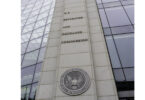Last week, the nonpartisan U.S. Congressional Research Service published a paper on central bank digital currencies (CBDC), following up on a document issued by the Federal Reserve last month. The new paper states that a CBDC will crowd out at least one of five other offerings. But while most people agree on this, they disagree which one will be crowded out.
The five things that a central bank digital dollar might compete with include:
- cash
- private digital currency
- foreign CBDC, eg. China
- existing private payment systems
- existing commercial bank systems.
While the paper explores most of these, it rightly points out that the particular design of a CBDC will make a huge difference, particularly for payment systems. Some designs could encourage innovation and competition, particularly those including non-bank payment providers. On the other hand, if the Federal Reserve provides the network, it could crowd out traditional and new payment providers. The Fed might struggle to maintain an innovative platform in the future.
Risks of crowding out commercial banks have been well documented, including the switch out of commercial bank deposits and a potential increase in the Federal Reserve’s role, which many might find undesirable.
The paper explored several potential benefits and risks of a CBDC, including the all-important one of financial inclusion. On the risk side, it pointed out that crowding out cash could reduce inclusion, and the requirement of a smartphone could also be limiting.
However, there was one area that appeared to make a design assumption. It stated that if there were a FedAccount, there would need to be a checking account to reduce the unbanked. And to reduce the unbanked, that account would need to provide other banking services. However, we’d note that if the CBDC were tokenized instead of a FedAccount, it would be possible for private firms to address the underbanked without the need for the Fed’s involvement in other banking services.
The document’s purpose is for Congress to decide what to do about a CBDC. The outlined options included:
- legislating to block or require a CBDC
- legislating to stipulate a timeframe and features for a U.S. CBDC
- defer to the Federal Reserve on policy matters.
Last year during hearings about a CBDC, Congress appeared divided about the need for one, with several Republicans arguing that stablecoins can serve the same purpose. In the more recent hearings about stablecoins, there was slightly less division.






